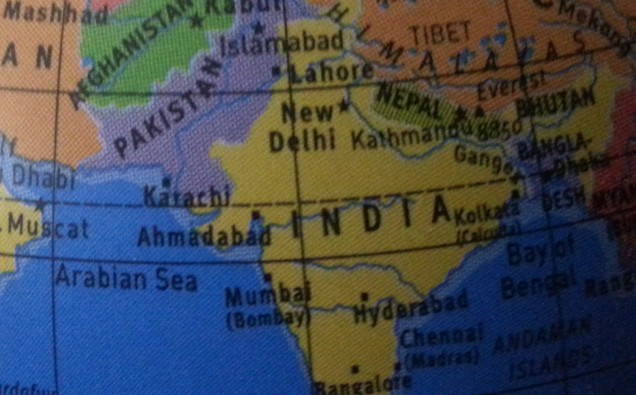
This time, it was Paris, the French capital hosting much awaited World Summit on Climate Change. A brief chat, without any agenda finalized by Foreign Offices in New Delhi and Islamabad. As per footage aired on the TV Channels , Prime Minister Narendra Modi spoke in a suggestive mood with Prime Minister Nawaz Sharif. Though, lasting over just 120 seconds, the brief meant a lot for the people of South Asia, who have been hostage to the India-Pakistan rivalry for the last 68 years.
But will it lead to something substantive that may help progress toward South Asian peace?
The Paris meet may not appear to be a prelude to the resumption of India-Pakistan Composite talks. Yet this could be a catalyst in bringing down the tensions in the relations of the nuclear-armed rivals if the leaders follow up on this ice-breaking meeting. Especially so, as it comes in an atmosphere rife with acrimony in the wake of anti-Pakistan campaign launched by the Bhartiya Janata Party (BJP) and its allies in India during elections of Bihar state, this golden handshake means a lot. The Indian election rhetoric has been accompanied by unusually high number of ceasefire violations in the disputed Jammu and Kashmir regioin.
No recent Pakistani election has been fought on an Indian-specific platform.
This is the third meeting between the political leaders of two neighboring states following their interaction in Russian town of Ufa in July and on the occasion of oath taking of Indian Prime Minister in New Delhi on May 24, 2014. The way Ufa declaration was misinterpreted by the foreign offices of both the nations, could not yield the results to bring thaw in the ties. The meeting between the National Security Advisors of India and Pakistan could not take place despite all the arrangements. Another opportunity lost towards peace in the region due to hawkish diplomacy.
The two nations have missed the elusive peace bus several times in recent decades. Be it Tashkent declaration in 1966, Simla Agreement of 1972, Lahore Declaration of 1999 and Ufa Declaration of 2015, the agreements have not been implemented in true letter and spirit. That is one of the primary reasons, that South Asia remains home to the biggest people living below the poverty line, having little or no access to quality education, healthcare facilities and even toilet.
Since the Narendra Modi government came into power in India in 2014, New Delhi has hardened its stances on a number of issues. Indian leaders have talked about the solution of UN-acknowledged Kashmir issue on their own conditions. So much so that some analysts wondered if Modi wants to impose another war between the two countries that fought in 1948, 1965 and 1971 and also had a limited conflict in Kargil, the uninhabited snow peaks in the Himalyas some 16 years ago. The fever-pitched Indian domestic politics and a relentless Pakistan-bashing campaign as well as RSS-inspired terror against Muslims on suspicions of eating beef have stoked the tensions in the South Asia.
Will the Paris meeting help revive the composite dialogue and Cricket relations between the two nations ? The holding of India-Pakistan Cricket Series at some neutral venue like Sri Lanka may be a good dividend of this 60 seconds encounter between Modi and Sharif. Such a breakthrough would contribute to long-stalled dialogue on different issues including Kashmir. Over the last two years, except a couple of exchange visits of Indus Water Commissioners of the two countries, no round of Comprehensive talks has taken place. This has resulted in the off and on suspension of trade through Wagha and across Line of Control in Kashmir. In the absence of direct trade, consumers of both the countries suffer. According to estimates, the two-way trade can reach the lofty level of US $ 10 billion if all the barriers , both tariff and non-tariff, are removed. The stringent visa rules are also obstacles. Very few Pakistanis and Indians cross Wagha border, the only international crossing these days. Pakistani and Indian officials meet only at the multilateral forums.
As the two South Asian countries that are strategically located at the confluence of affluent East and West Asia regions, implications of such a standoff run really wide. How will the two countries play the role of conduit for the energy and commercial needs of neighboring regions? Naturally, that could only come about if the bury the hatchet.
If Japan and Korea , France and the United Kingdom and Indonesia and Malaysia can cooperate with one another despite having a long history of animosity, why not Pakistan and India. Imperatives for a peaceful South Asia abound. The question is how the region moves toward that end.













